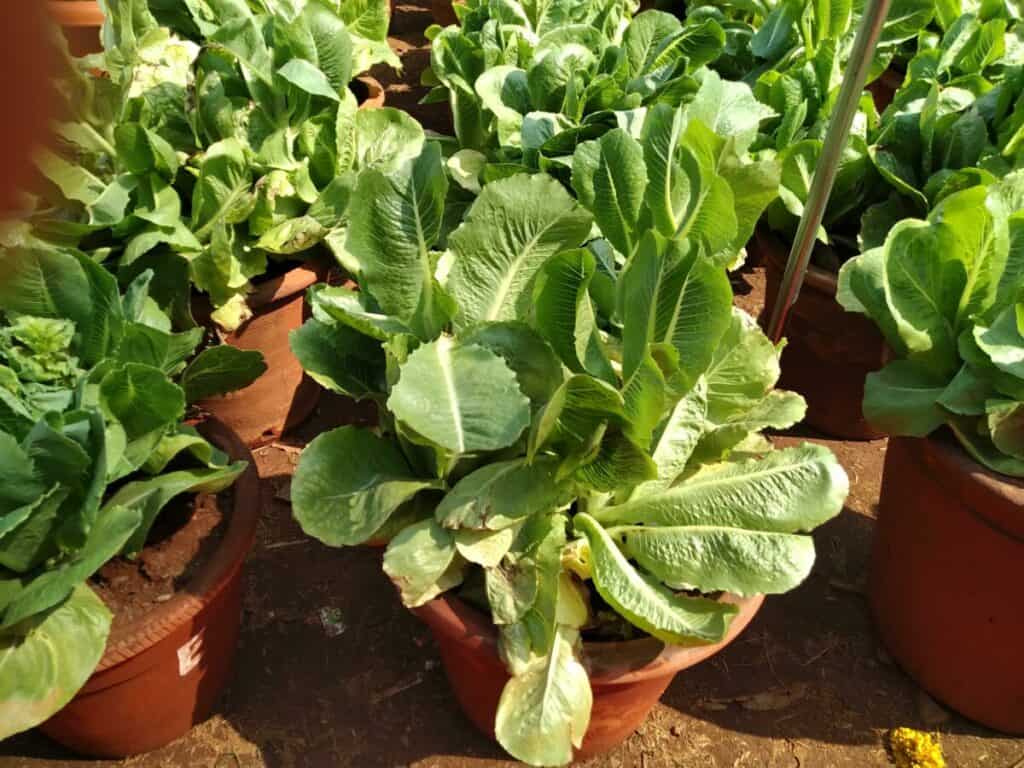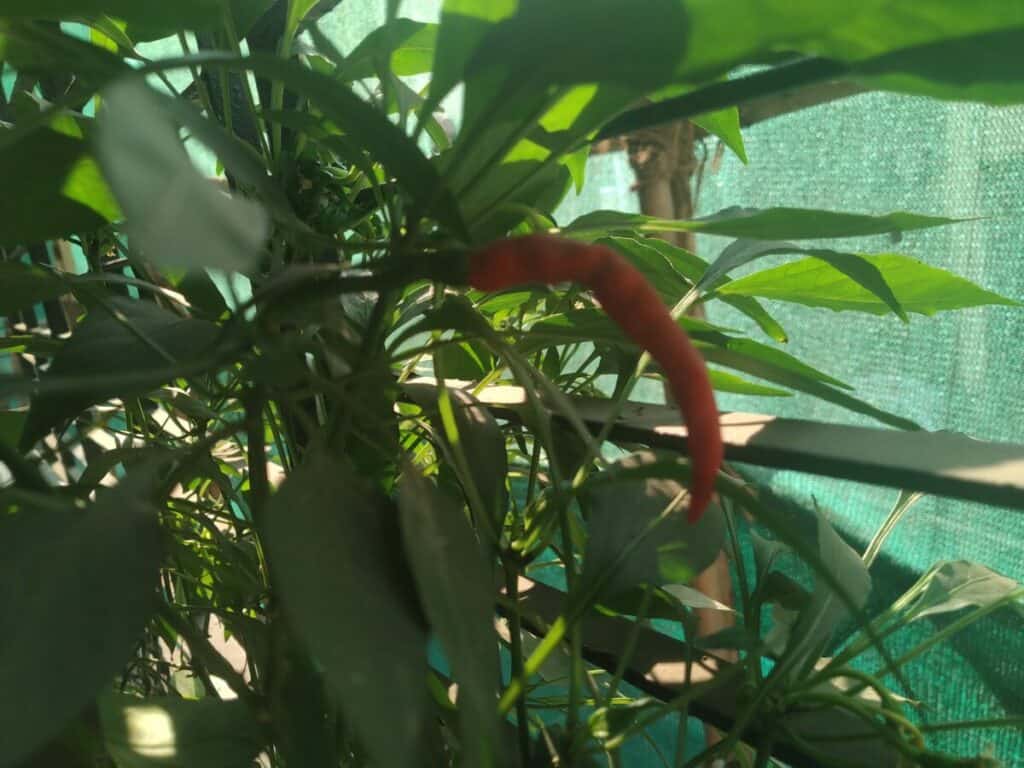I want to grow vegetables in containers and one important factor is to feed them with fertilizer. I’ve written details on how often you need to feed them.
You should fertilize your container vegetable garden every two weeks during the growing season from Spring until late Summer. You can also dilute the fertilizer and add it every day when watering the vegetable plants.
You should know the different types of fertilizer and how to use them in your container vegetable garden. I’ve written the information below so keep reading.
How often should you add fertilizer?
Most potting soils come with a slow-release fertilizer that will help your plants get nutrients for two weeks. After that, you’ll need to feed your vegetable plants.
The general idea is to feed your container vegetable plants every 2 to 4 weeks for a good supply of nutrients. But if the vegetables are fruiting varieties like tomatoes, cucumbers, peppers, it’s best to fertilize them every 1 to 2 weeks.
What is the best fertilizer for container vegetables?

There are different types of fertilizer available for container vegetables but I recommend you use organic fertilizers. They are slow-release so you won’t end up damaging the plants. And they are chemical-free so won’t harm the beneficial organisms in the soil.
You can choose between a granular fertilizer or a liquid fertilizer. A granular fertilizer has slow-release granules that you place on your soil. These are slowly absorbed into the soil when you water your plants.
Liquid fertilizer is something you mix with water and then spray on the soil and the plant’s foliage. These are absorbed quickly by the plant’s roots and leaves.
You can get fertilizer made with materials like kelp, seaweed, fish emulsion, compost tea, blood meal, bone meal, feather meal, earthworm castings, and bat guano.
When you start growing a container vegetable plant, you can add a complete fertilizer to the soil. This is a fertilizer that has a balance of nutrients N-P-K. N stands for Nitrogen, P stands for Phosphorus, and K stands for Potassium.
Once your vegetable plants start growing after a few weeks, you need to add a fertilizer that’s beneficial to the plant.

If you’re growing leafy vegetables like lettuce, spinach, Swiss chard, you should use a fertilizer that’s high in nitrogen. This helps the plants grow good foliage that we expect from such vegetables. Some fertilizers that are rich in nitrogen are blood meal, feather meal, and fish emulsion.
If you’re growing fruiting vegetables like tomatoes, cucumbers, peppers, it’s best to use a fertilizer that is rich in phosphorus. This helps the plant focus it’s energy on growing flowers and fruits. Some fertilizers that are rich in phosphorus are bone meal and bat guano.
Growing root vegetables like carrots, beets, and potatoes means you need good root development. Fertilizers rich in potassium will help you get this result. Some fertilizers you can use are sulfate of potash and palm bunch ash.

How do you fertilize a potted plant?
You need to be careful to give the vegetable plant the right amount of fertilizer. Too less will not provide the nutrients the plant needs. And excess fertilizer will damage the plants due to fertilizer burn.
Remember to follow the instructions provided on the fertilizer bag to get the best results. This will give you information about how to use the fertilizer and how often.
Add to the potting soil
Most potting soil will come with some slow-release fertilizer for the plant. You can ask your local garden center for specific fertilizer for your vegetable plant. This will provide nutrients to your plants for a couple of weeks.
If the potting soil does not contain such fertilizer, you can buy some and add it on your own. It’s best to use a complete fertilizer with NPK values 3-3-3 to give overall nutrients to the plants.
You should add ½ tablespoon slow-release fertilizer per gallon of potting soil. So if your pot contains 5 gallons potting soil, you’ll need to add 2½ tablespoons of fertilizer.
Mix the fertilizer well into the potting soil before adding it to the container and planting the vegetable plant or seed.
Add to the container
If you’re using a granular fertilizer, you’ll need to add it to the soil every month. You can put it on top of the soil and water the plant.
The slow-release fertilizer will slowly integrate into the soil to provide nutrients to the roots.
Spray on the leaves and soil
If you’re using a liquid fertilizer, you’ll need to mix it with water in the watering can. The amount you need to use will be specified on the fertilizer bag.
You can spray the liquid fertilizer every 2 to 4 weeks in the growing season. When fruiting plants have grown, you can increase the frequency to every week.
You can also use liquid fertilizer when watering the plants every day. But you need to dilute the fertilizer even more to avoid fertilizer overdose.
What time of day is best to fertilize potted plants?
The best time to fertilize your container vegetable plants is when you’re watering the plants. This could be in the morning or evening.
Watering in the morning is the best time because it allows the plant’s roots to absorb the nutrients before the water evaporates due to the heat or wind.
You don’t want to water the plants in the afternoon because the heat will evaporate the moisture before the roots can absorb it. The water may also heat up causing the leaves to burn.
Watering in the evening is also fine but you need to be careful that the water dries out by night. If the leaves remain moist at night, it can cause fungal diseases on the plant.
How do I know if my container plants need fertilizer?
Every time you water the container, nutrients leach out from the drainage holes. Plants that grow in containers can’t use their roots to spread out in search of nutrients.
I recommend following the schedule and adding fertilizer to the container plants. But there are some signals you can use to know if the plant needs fertilizer.
If your potted plants are showing signs of wilt or drooping leaves, the first thing to do is water the plants well.
If that does not solve the problem, there’s a good chance that the plants are lacking nutrients and you need to fertilize them.
When should you not fertilize potted plants?
There are some situations where adding fertilizer to the container vegetable plants will cause more harm than good.
When the plants are under stress due to pests, diseases, or transplant shock, you should not add fertilizer to them. This will increase the stress on the plants and damage them even more.
You should add fertilizer only during the growing season from spring to late summer. Adding fertilizer during a dormant season like winter will cause the plant to try to grow and damage it in the process.
There are some vegetable herb plants like lavender, thyme that prefer an environment of low nutrients and moisture. They grow their best and taste better in such conditions.
How to make your own fertilizer for potted plants?
You need to buy as much fertilizer as you have plants in your container vegetable garden. This can cost you some money depending on how big your garden is.
There are ways you can make your own fertilizer that is good enough for growing potted plants. Here’s one such method using compost.
Soak a bag of compost in a bucket of water for 10 days. Take the bag out and you should have a brew formed in the bucket.
Dilute this brew with more water till it appears the color of light brewed tea. Your liquid fertilizer is ready and you can use it for your plants every week or two.
Further Reading
Adding fertilizer is one part of growing a successful container vegetable garden. But you do need other basics such as watering, mulching, pruning, and taking care of pests and diseases. You can find all the information below,

Fact Checked, Written, and Published by Kevin Rodrigues
Kevin is the founder of Gardening Mentor, a website that aims to teach people to grow their own food in a limited space. As a self-taught gardener, Kevin has spent several years growing plants and creating gardening content on the website. He is certified in Home Horticulture and Organic Gardening from Oregon State University. He has a Post Graduate Diploma in Horticulture and Landscape Gardening from Mumbai University.
Read more
